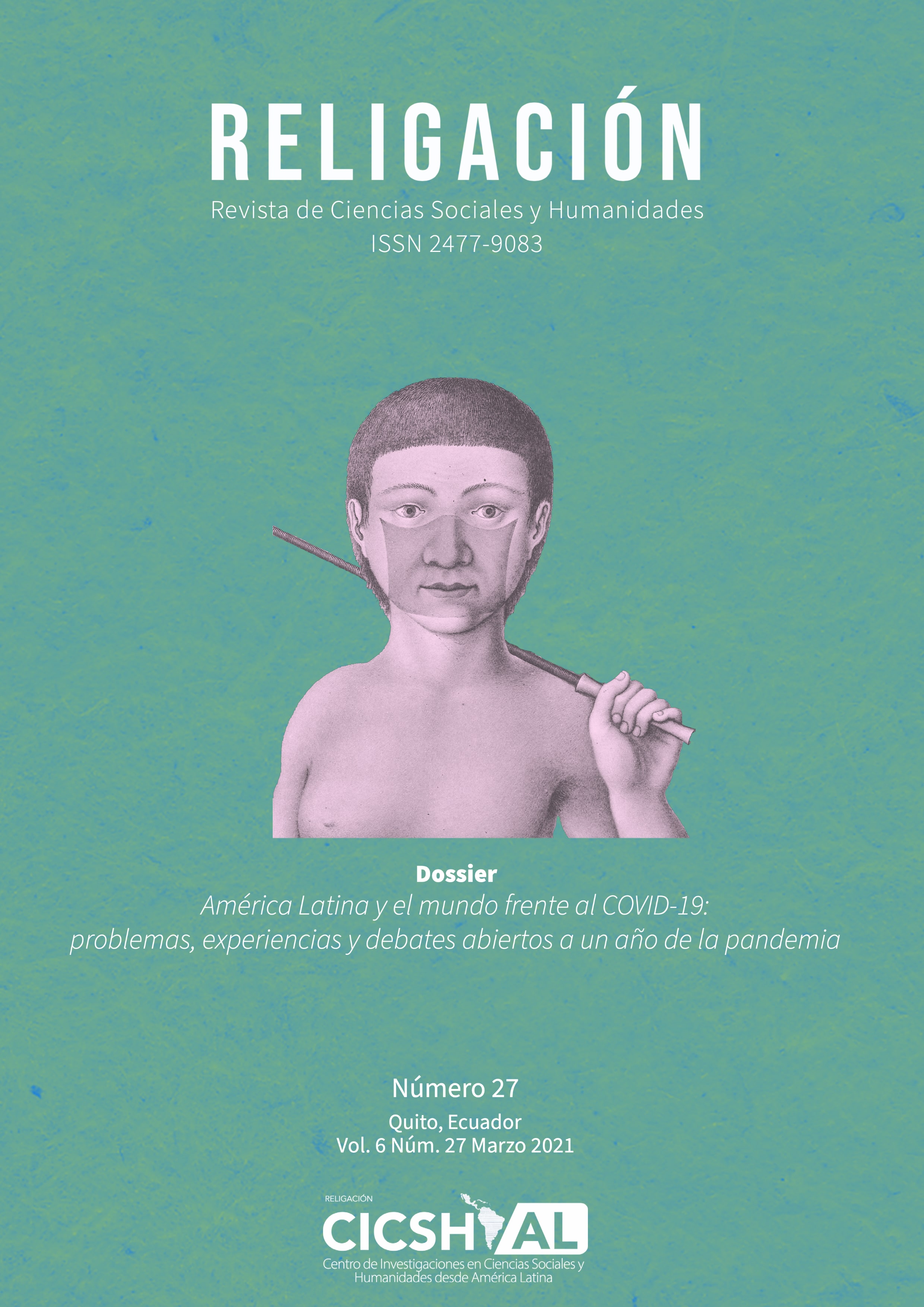Viviendo en la escasez: Colonia México 68 en la pobreza y la exclusión
Resumen
El crecimiento de los asentamientos irregulares en Ciudad Juárez ha contribuido en gran medida a la expansión de la ciudad, donde la expansión informal de la ciudad se transformó posteriormente en una urbanización regular. La razón de esto no es de largo alcance, ya que la aglomeración de migrantes en la ciudad redefinió frecuentemente su crecimiento. Al mismo tiempo, la importancia económica de la ciudad en el proceso global del capital la ha convertido en un punto de destino para la contratación de mano de obra desde el interior de México hasta el centro y el sur de América. Este trabajo investiga el contexto histórico del surgimiento de la experiencia vivida en medio de la pobreza y el proceso de exclusión social en la Colonia México 68, un asentamiento al oeste de la ciudad de Ciudad Juárez, Chihuahua, México, una vecindad rodeada de multinacionales también conocidas como maquiladoras. Se sabe que sus habitantes son pobres y viven en la pobreza y la exclusión. La investigación se basa en una investigación etnográfica que utiliza el Modelo de Exclusión Social de Bristol (BSEM) para medir la pobreza y la exclusión social a pesar de la proximidad espacial de las maquilas que potencian a los habitantes. Se realizó un muestreo aleatorio de la población a través de entrevistas y pruebas pictóricas. Se realizaron entrevistas documentadas de apoyo con el personal de Asentamientos Humanos para comprender mejor la narrativa y la experiencia vivida por los habitantes. En la ejecución de los hallazgos etnográficos se adoptó el paradigma de la realidad subjetiva de Luckman y Berger. Se observó que una política social centrada en la educación, la formación, la seguridad social, la vivienda y la provisión de salud mejoraría aún más la vida de los habitantes y fomentaría más formas de inclusión.
Descargas
##plugins.generic.paperbuzz.metrics##
Citas
Alegria, T., Barba , G. (2016). Legalizing the City: Informal Settlements in Regularization Process in Tijuana. El Colegio de la Frontera Norte.
Chambers, R. (1995). Poverty and Livelihoods: Who Reality Counts? Environment and Urban, 7(1). 173-204. https://doi.org/10.1177/095624789500700106
Connolly, P., & Wigle J., (2017). Constructing Informality and Doing Regularization in the Conversation zone of Mexico City. Planning Theory & Practice, 18(2). 183-201. https://doi.org/10.1080/14649357.2017.1279678
Daniel, T., Litcher., DomenicoP.,& Michael, C. Taquino. (2012). The Geography of Exclusion, Race, Segregation & Concentrated Poverty. Oxford Press.
Davis, M. (2006). Planets of Slums . Verso.
Dijerterlon, P. (2005). Poverty: A Phliosophical Approach and Philosophical Studies. Rodopi.
Durand-Lassavre, A. (2006). Informal Settlements & The Millenium Developement Goals. Global Policy Debates on Property Ownership and Security of Tenure. Global Urban Develoement. 2(1). 237-254. https://www.globalurban.org/GUDMag06Vol2Iss1/Durand-Lasserve.htm
Eisenhammer, S. (2014). Narcoculture and the Politics of Representative Barelife in Ciudad Juarez in Ciudad Juarez: Violence in a Space of Exclusion. Sage.
Elena, T. (2019, January–August 19th). Living Conditions in Mexico 68. (T. Noibi, Interviewer)
Fisher, B. (2014). Cities From Scratch: Poverty and Informality in Urban Latin America. Duke University Press.
George, J. (2018). Are Informal Settlements Boon or Bane? In I. Kucina, Informal Architecture.
Gomes, C. (2012). Family and Inequalities in Latin America and the Carribean. Social Science Mind Scientific Research, 3(1). 25-32. http://dx.doi.org/10.4236/sm.2013.31005
Harvey, D. (1988). Social Justice & the City. Blackwell.
Houghton, A., Khandker, J.,& Shahidar, R. (2009). Understanding the Determinants of Poverty: HandBook on Poverty and Inequality. World Bank.
Johoel-Gijsberg, G. (2007). Explaining Social Exclusion: A Theoretical Model Tested in The Netherland. The Netherlands Institute of Social Research/SCP.
Kamalipour, H. (2016). Forms of Informality and Adaptations in Informal Settlements. International Journal of Architectural Research, 10(3). 60-75. https://archnet.org/publications/10792
Kucina, I. (2018). What is the Concept of Architecture of Informality.
Lefebvre, H. (1991). Critique of Everyday Life. Verso.
Levitas, R., Pantaers, C., Fahmy, E., Gordin, D., Lloyd. & Pastios,D. (2007). The Multidimensional Analysis of Exclusion. Departmeent of Sociology & School of Social Policy Townsend Center for International Study of Poverty. University of Bristol, Department for Communities & Local Governance.
Lewis, O. (1966). The Culture of Poverty. Scientific American
Lorrain, J. (1989). Theories of Development: Capitalism, Colonialism, and Dependency. Policy Press.
Massey, D,& Denton, N. (1993). Segregation and the Making of the Urban Class from American Apartheid.
Peace, R. (1991). Social Exclusion: A Concept in Need of Definition. Knowledge Manangement Group. Ministry of Social Policy .
Planeaceon, I. (2009). Polygon 1. Polygon of Estralla del Poniente. Insitituto Municipal Investigación Planeaceon (IMIP).
Quijada, G. (2005). Politicas Federales E Intervencion Empresarial en la Configuracion Urbana de Ciudad Juarez (1940-1992). Ciudad Juarez.
Rodgers, D., Beah, J., & Kanbur, R. (2017). Latin American Urban Development into the 21st Century: Towards A Renewed Perspective on the City. Palmgrave Macmillan.
Pena, S., and Fuentes, C. (2007). Land Use Chnages in Ciudad Juarez, Chihuahua: A Systems Dynamics Model. Estudios Frontier (pp. 65-89).
Sietchiping, P. (2004). Caliberation and Validation of a Proposed Informal Settlement Growth Model. 7th Agile Conference on GIS, Parallel Seesion. Heraklin.
Sun, L., & Ho, P. ( March, 23-27 2015). Linkage Land Tenure & Use for Shared Property; An emerging Phenomenon of Informal Settlements in China, a Small Property Rights Housing in Urban Villages and Peri-Urban Areas. 2015 World Bank Conference of Land & Property (pp. 43-62). World Bank.
Taher, M., & Ibrahim, A. (2014). Transformation of Slums and Squatter Settleements: A way of Sustainable Living in the Context of 21st Century Cities. American Journal of Civil Engineering & Architecture. 2(2). 70-76. http://pubs.sciepub.com/ajcea/2/2/3/
Vazquez, G. (2020, February 2020). Topographer. (T. Noibi, Interviewer)
Veltmeyer, H., Petras, J, & Vieux, S. (1997). Neoliberalism and Class Conflict in Latin America: A Comparative Perspective on the Political Economy of Structural Adjustment. Macmillan.
Wigle, J. (2010). Social Relations, Property and Peripheral Informal; Settlement: The Case of Ampliacion San Marcos. Mexico City. Urban Studies Journal, 47(2). 411-436. https://doi.org/10.1177/0042098009351189
Wood, A. (2001). Anticipating the Colonias: Popular Housing in El-Paso & Ciudad Juarez 1890-1923. Journal of South-West, 43(4). 493-504.
Derechos de autor 2021 Tajudeen Noibi, Ojeiru Ezomo, Digvijay Pandey

Esta obra está bajo licencia internacional Creative Commons Reconocimiento-NoComercial-SinObrasDerivadas 4.0.











